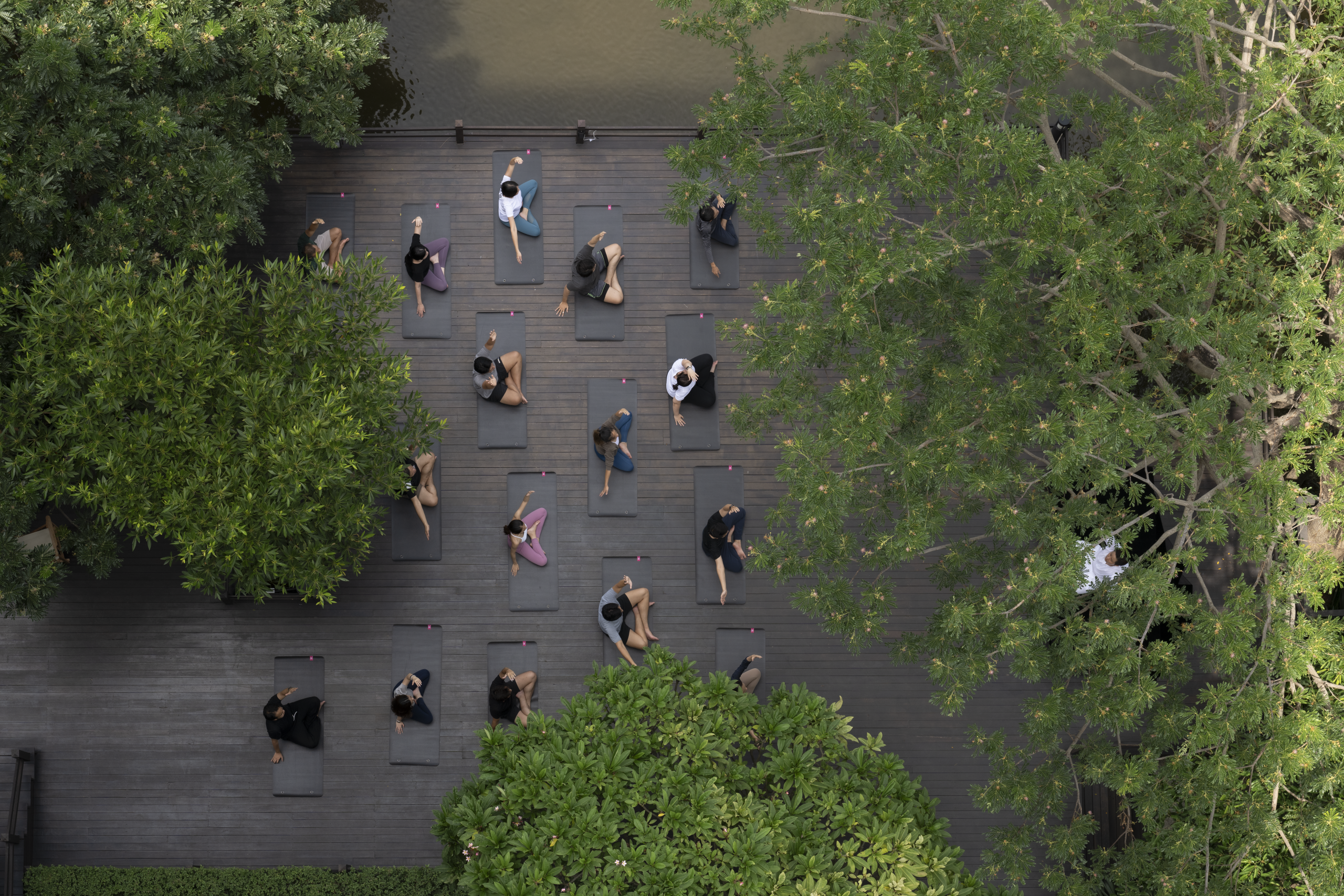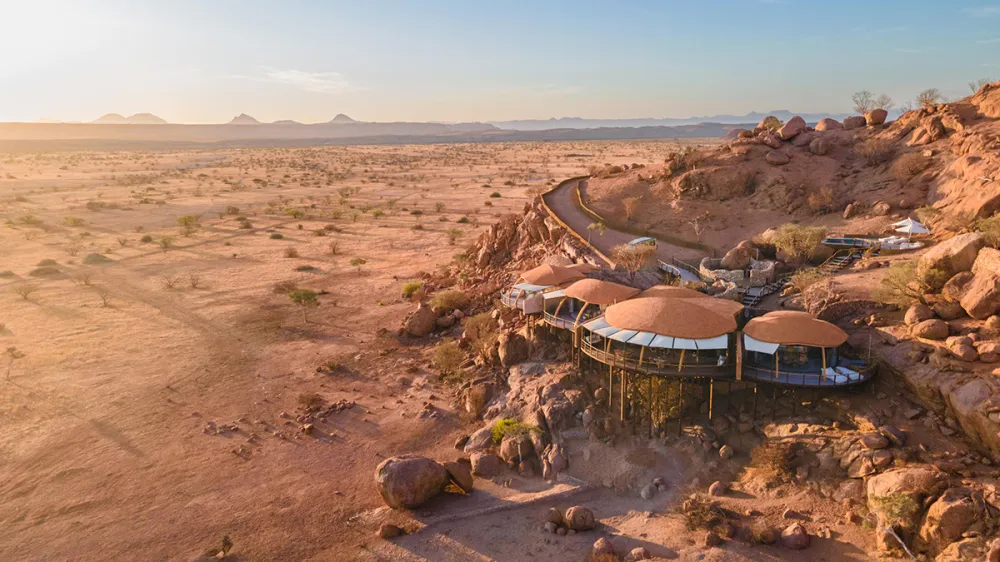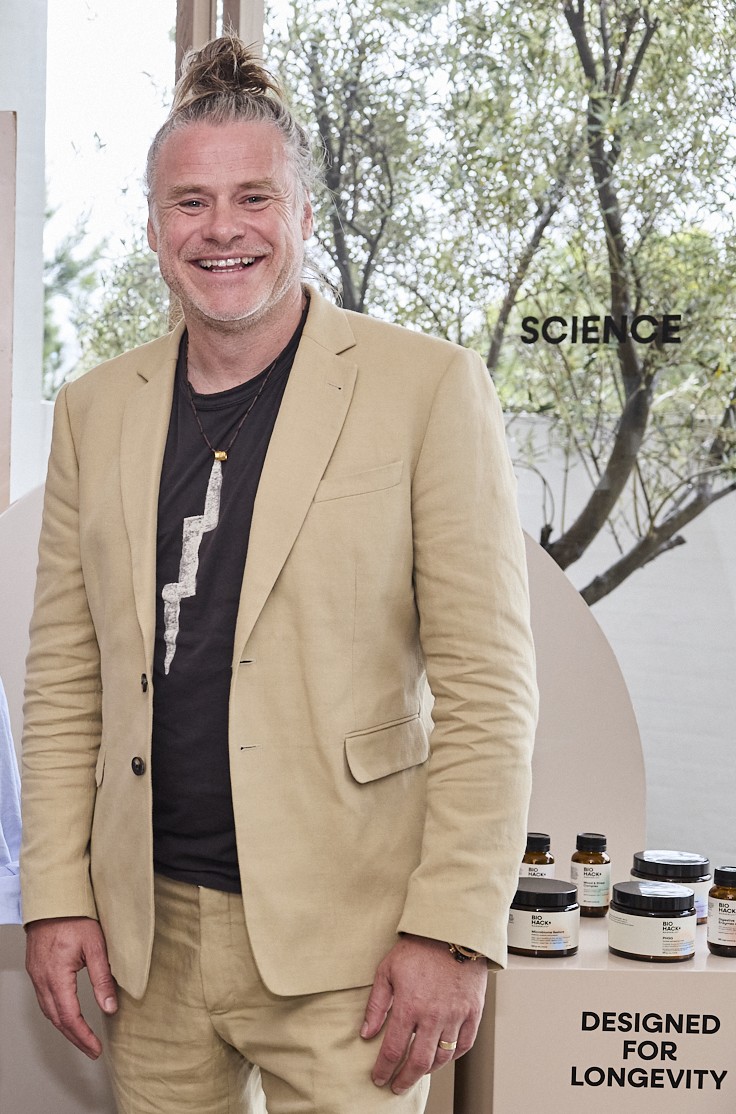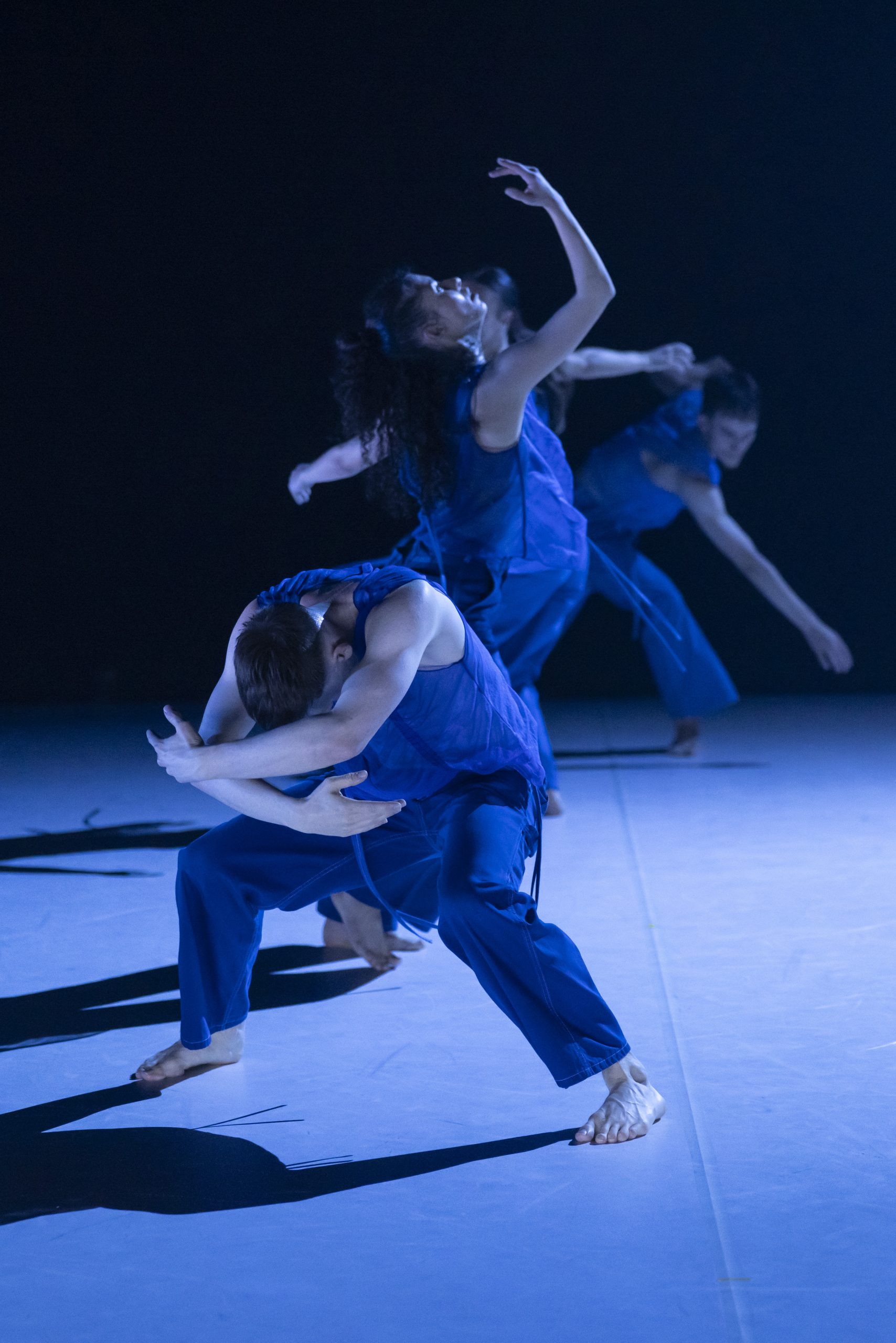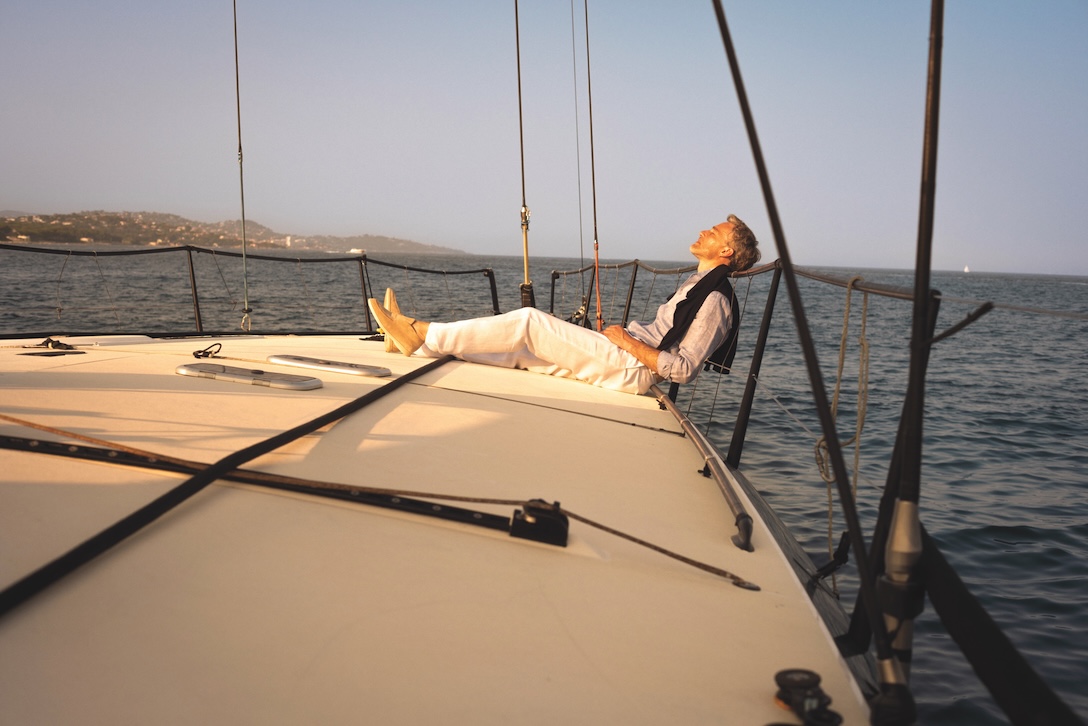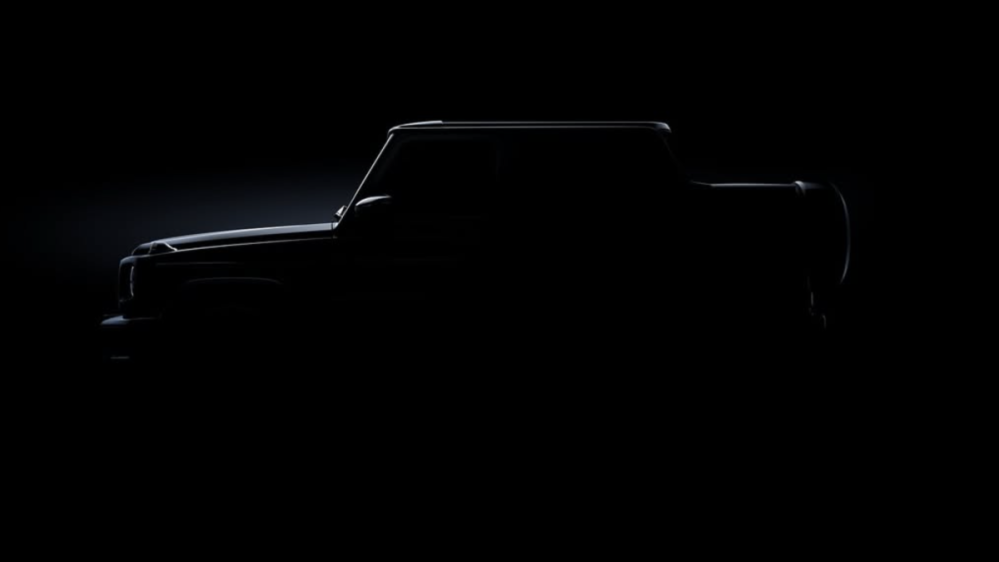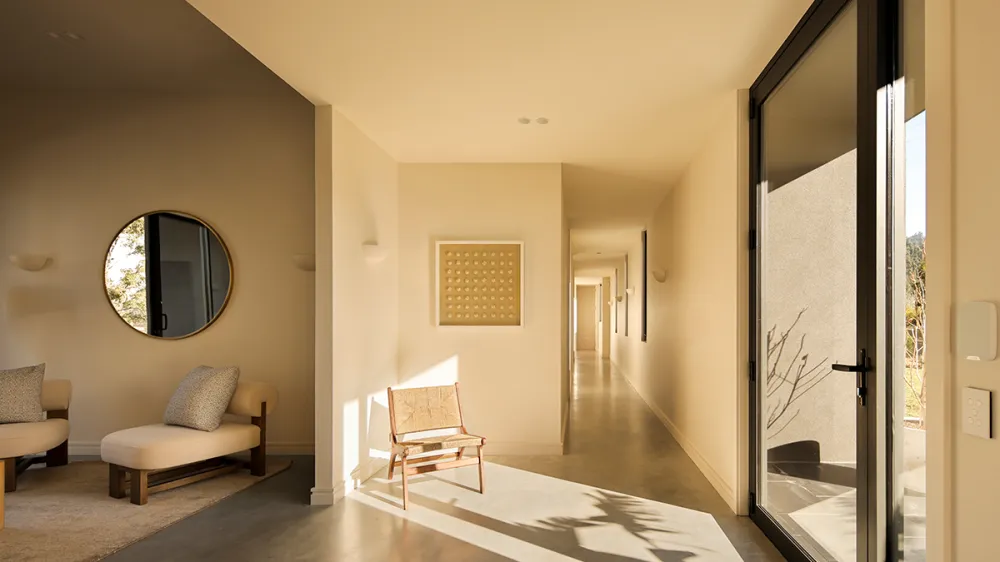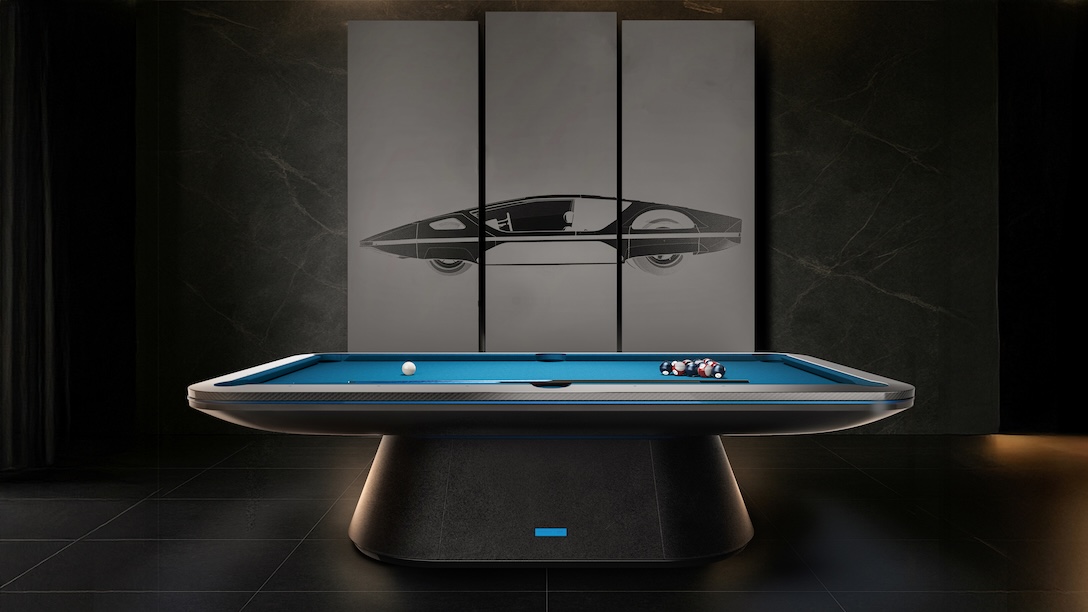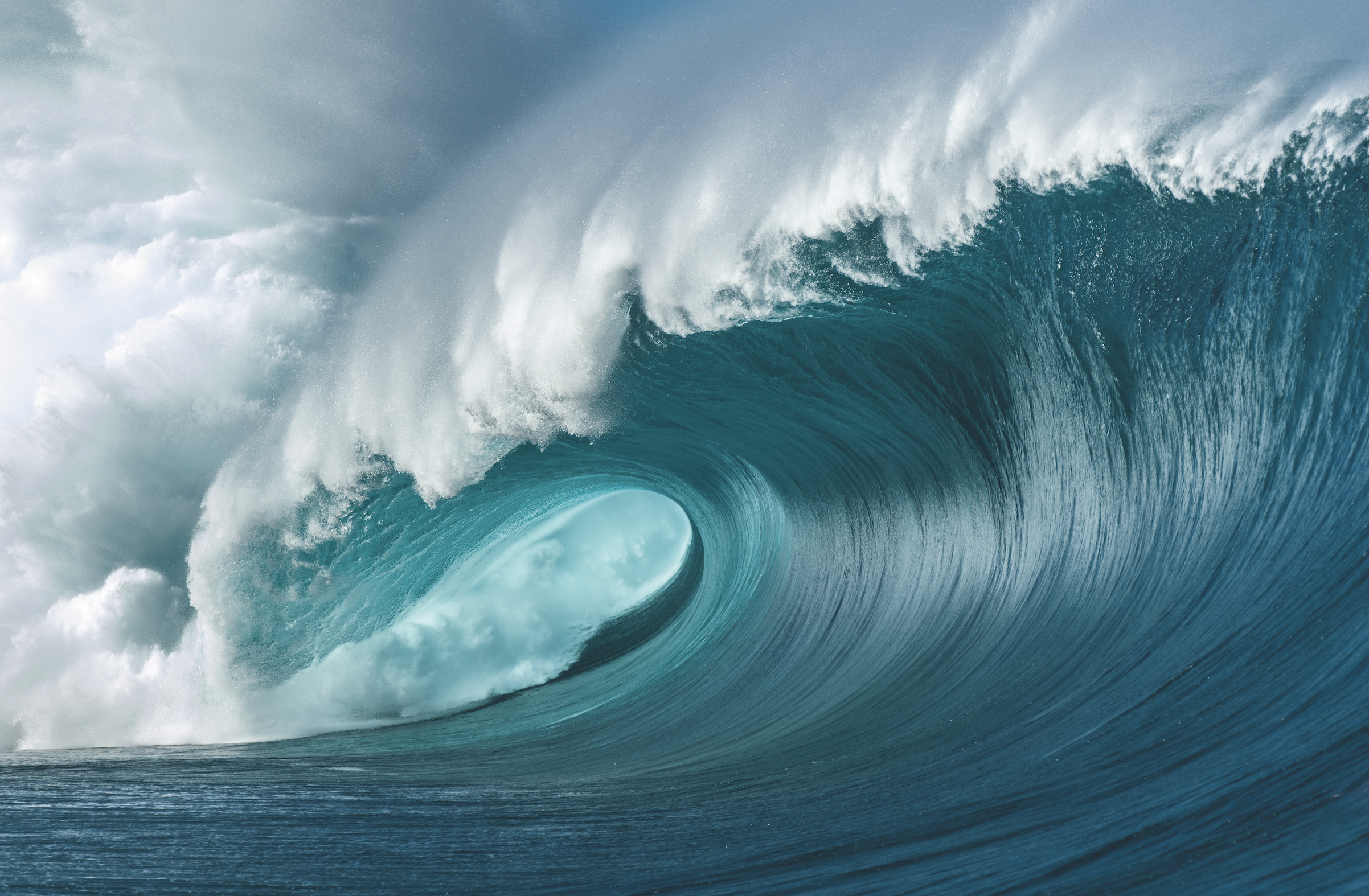
Don’t Ride This Wave ….*unless your name is Robinson, Slater or Moore.
The 2024 Olympic surfing comp will be held at Tahiti’s treacherous Teahupo’o. Going for gold could be deadly.
Related articles
It’s day two of the 2023 Tahiti Pro Surf Competition. I’m perched on the roof of a VIP boat around 100 metres from Teahupo’o, one of the world’s most dangerous waves. American Surf icon Kelly Slater has just been swallowed by a heaving wall of turquoise water. I’m so close to the action that when he’s finally spit out from the ride, my face gets misted in ocean spray. Below me, Australian Jack Robinson, who will go on to win the event, sits on the edge of the boat performing breathing exercises ahead of his heat. Around me, a flotilla of kayaks, jetskis, surfboards, and small vessels bobs in the channel, acting as a floating stadium for fans.
For many of the competitors—and the 1,400-odd residents of the wave’s namesake village—this year’s contest is a dress rehearsal for an event with a far larger global profile in a few months’ time. While many of the world’s top athletes will travel to France in July for the 2024 Paris Olympic Games, the most talented surfers will head here, to the southwest corner of Tahiti island’s small peninsula, Tahiti Iti, to vie for gold at Teahupo’o in just the second surf competition in Olympic history.
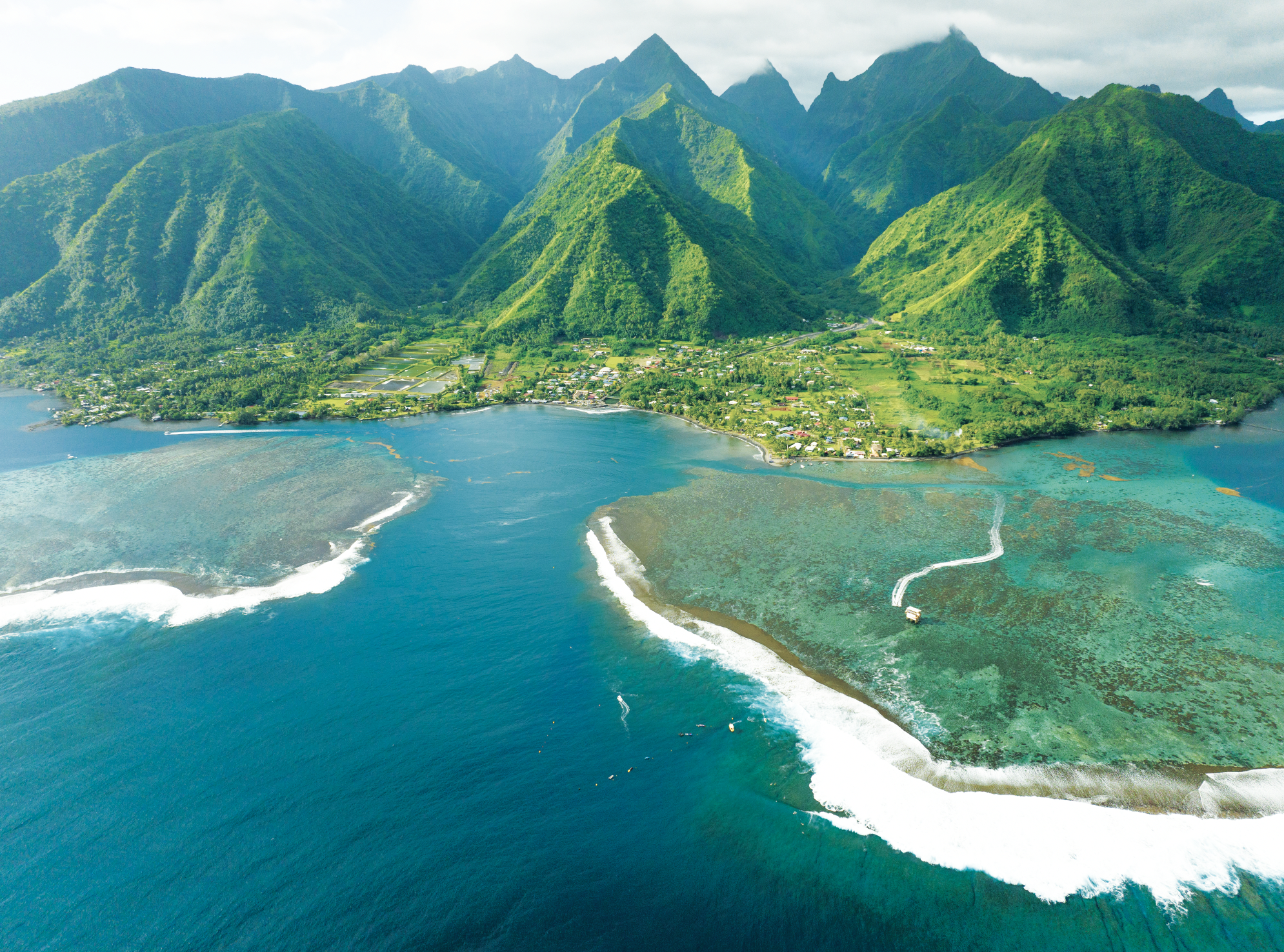
In keeping with the limit of two surfers per gender, per nation, the Australian flag will be flown by Ethan Ewing (No. 2 in the World Surf League rankings at the time of writing) and the aforementioned Robinson (No. 5) in the men’s category, and Tyler Wright (No. 3) and Molly Picklum (No. 5) in the women’s. On this form, hopes of a homegrown medal haul are high.
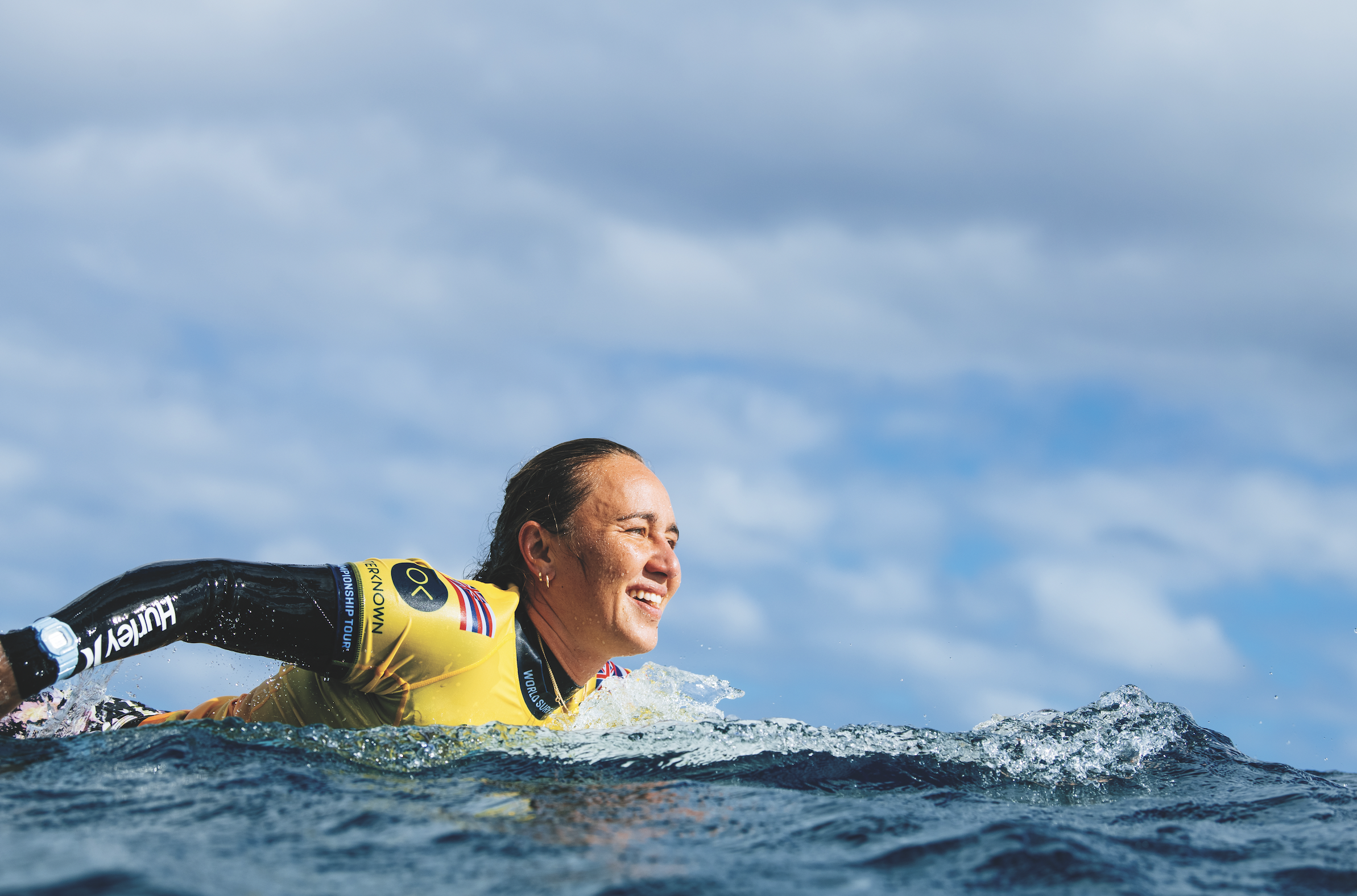
Olympic officials could have chosen a site off the coast of France, such as the surf towns of Biarritz or Hossegor, but historically, Mother Nature brings more sizable waves to Tahiti at this time of year. Plus, surfing has deep cultural ties to the region. The sport originated in Polynesia and dates as far back as the 12th century; it was practiced by Polynesian royalty. Teahupo’o is also a world-class wave that challenges the mental and physical prowess of even the most experienced competitors. The high risk of surfing this spot guarantees thrills that officials anticipate will boost viewership.
Located in the gin-clear waters of the South Pacific with a background of mountains that appear to be draped in jade-green crushed velvet, Teahupo’o (pronounced TAY-a-hoo-poh-oh) is one of the sport’s most infamous swells. (Its name loosely—and cheerily—translates to “place of skulls”.) According to Memoirs of Marau Taaroa, Last Queen of Tahiti, printed in 1893, the first person to surf it was actually a woman from the island of Raiatea, in the 19th century. Not until the 1980s did anyone dare attempt it again, with the first competition hosted in the late 1990s. Former pro turned filmmaker Chris Malloy has called it “the wave that has changed surfing forever”.
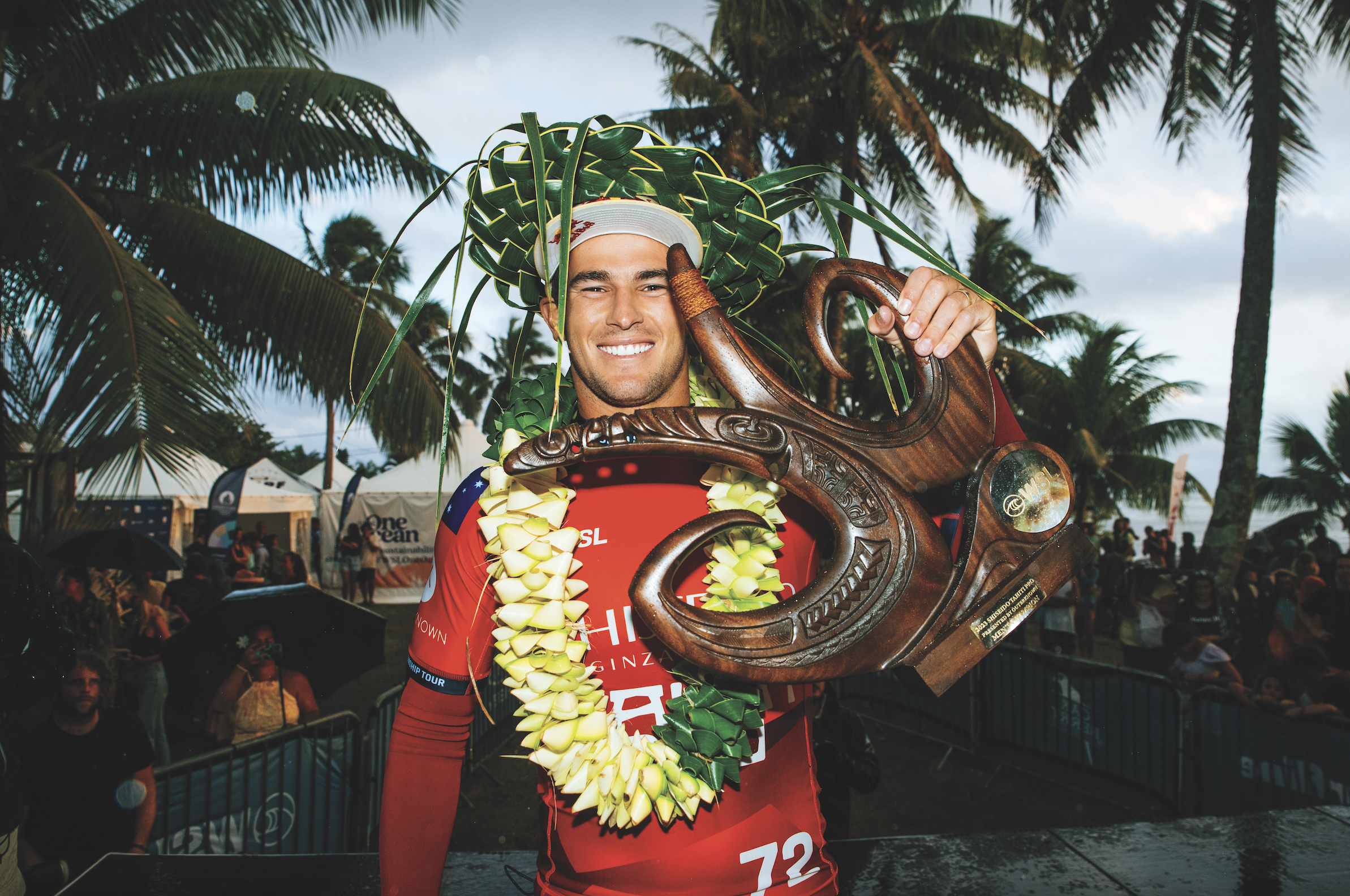
In the right conditions, Teahupo’o can tower upwards of six metres. That may sound small compared to the monster-size Jaws in Maui or Nazaré in Portugal—which can climb as high as 25 metres—but it’s not the height that makes Chopes, as the wave is lovingly called, so special. It’s the weight. When surfers describe a wave as heavy, they’re referring to its combination of a thick lip (the powerful section that starts to curl over) and the amount of water surging behind it.
Like most of the surf breaks found throughout French Polynesia, Teahupo’o is a reef break, meaning the water spills over the surface of knife- sharp coral. Chopes is unique because around 50 metres beyond the reef, the ocean drops more than 15 metres. As swells come toward the shore, the transition from deep water causes them to jack up over the coral before quickly crashing down with tremendous force.
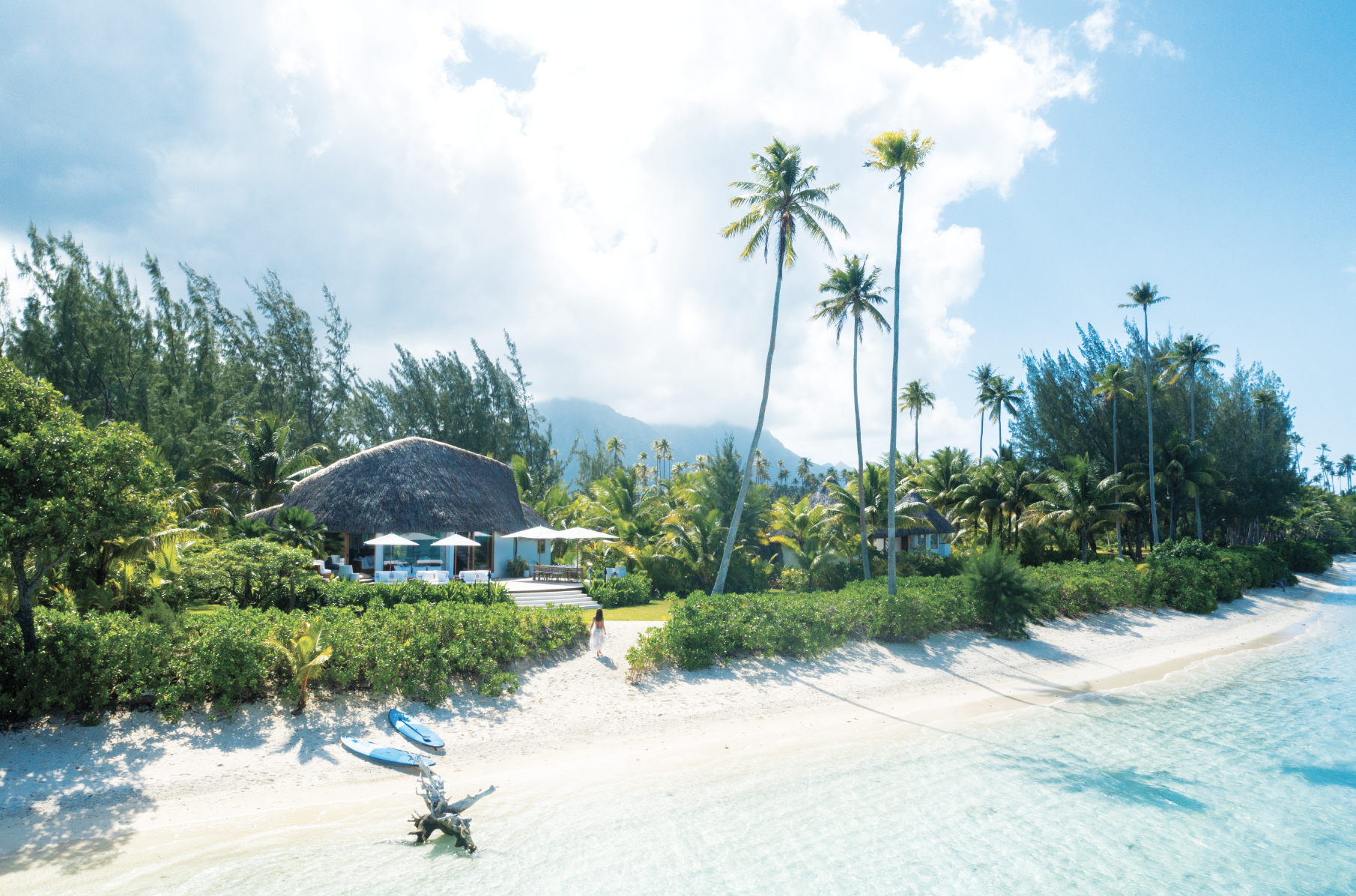
“The reef evolved perfectly in order to absorb the wave’s energy in the shortest distance possible to create this natural wonder,” surf superstar Laird Hamilton tells Robb Report. “It’s a wave that stands straight up and creates a huge barrel. It’s one of the greatest waves on Earth.” In 2000, Hamilton rewrote surfing history when he rode what has been dubbed the Millennium Wave here. Up until then, Teahupo’o was considered too perilous to attempt when it reached a certain size. Hamilton, a pioneer of tow surfing, had a jetski pull him into what is still considered one of the heaviest waves ever ridden. Surfer magazine published a memorable cover of him getting barrelled with just the words “Oh my god…” because the feat was so dangerous.
In places, the reef lurks just 50 centimetres beneath the water’s surface, and the lip can act like a liquid guillotine if it clamps down before a surfer exits the hollow tube of the wave, known as the barrel. Had Hamilton wiped out, he wouldn’t have had an escape route.
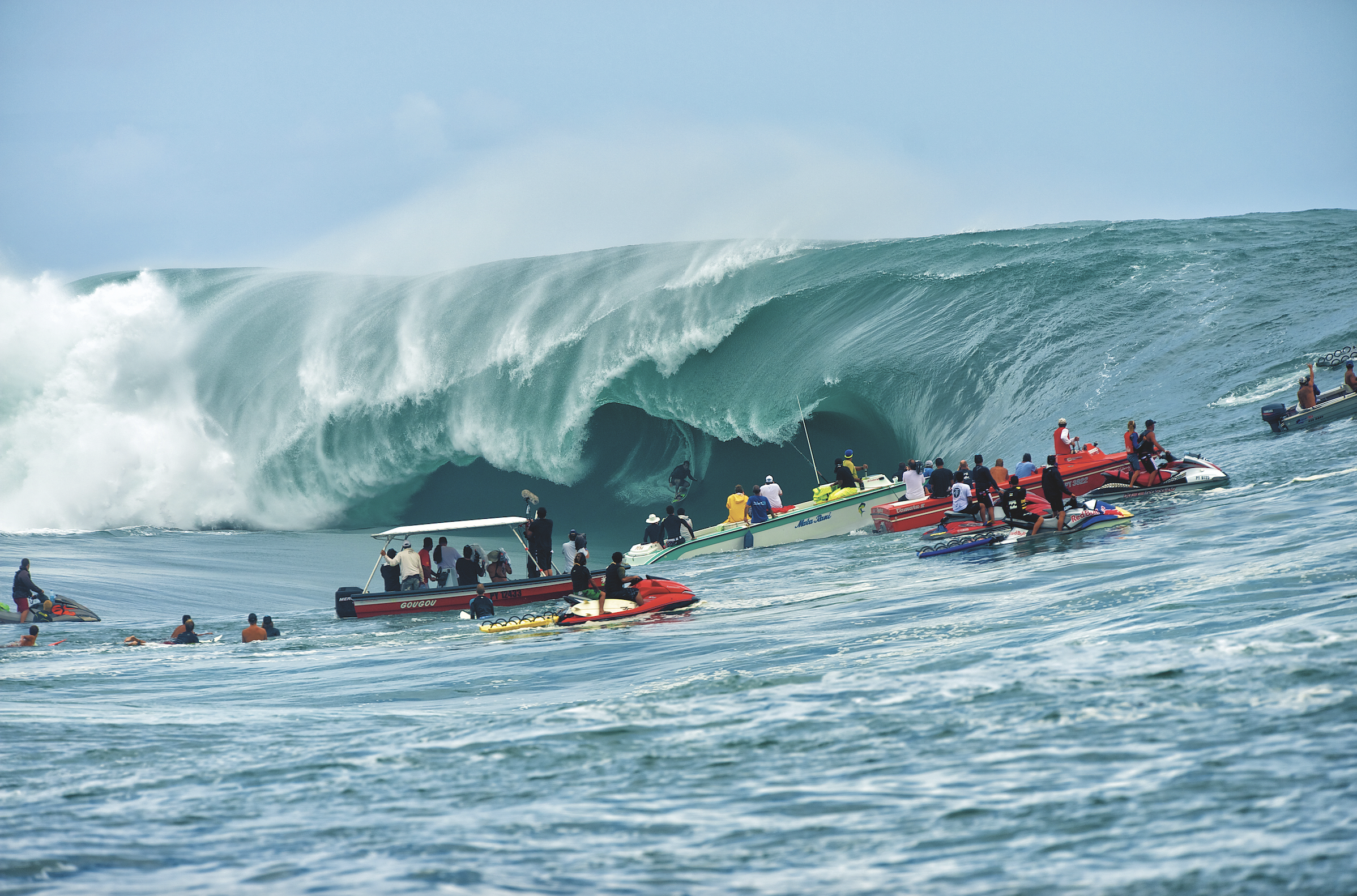
I’m an avid amateur surfer and live on Maui part-time to take advantage of Hawaii’s waves, but even on a gentle day, I wouldn’t attempt Teahupo’o. Teahupo’o village has a water-safety patrol that watches over athletes during contests. Still, a handful of surfers have lost their lives here, and many go home with serious battle wounds. In August last year, during a practice session for the Tahiti Pro, Ethan Ewing fractured two vertebrae in his back after crashing out in solid, but average, six-foot waves—an accident that arguably cost him top spot in the world rankings.
In classic gung-ho-surfer fashion, though, the Queenslander was back in the water at Teahupo’o three months later, one eye still resolutely fixed on Olympic glory. “Definitely more anxious than excited heading back to Tahiti after hitting the reef really hard last time,” he posted on his Instagram account. “Teahupo’o is still seriously intimidating, but I feel like I’ve made some steps in the right direction.”
Unless you surf, Tahiti Iti probably isn’t on your radar. Starting from the largest town of Taravao, the south-coast road ends at the village of Teahupo’o, hence its nickname, the End of the Road. The community, just 500 metres from the wave, is the antithesis of the glitz and glamour of Paris or even nearby Bora Bora. This is a slice of tropical paradise that has somehow evaded development. To reach the contest each day, I park at the end of the road, then walk over a one-lane bridge and follow a sandy path that passes local homes.
“All of your senses are heightened here,” former world surf champion C. J. Hobgood tells me when I run into him at the event. “It’s not just the wave—it’s the island. Everything looks five- dimensional. Mountains seem stacked on mountains and glow a vivid green. You turn to the right and these bluer-than-blue waves are breaking. Then a rainbow might appear in the sky. The raw beauty is overwhelming to take in when you first arrive.”
Surfers talk of feeling the mana, a Polynesian word for spiritual energy, here. Jack Robinson even referenced it after his victory in the Tahiti Pro. It may sound woo-woo, but I undoubtedly feel something when I arrive after a 90-minute drive south-west from the hotel-lined harbour of Tahiti Nui, the island’s larger, more developed area. Tahiti Iti’s empty beaches and waterfall-riddled lush interiors remind me of a quieter, more vibrant version of Hana, a little corner of Maui with just one hotel, a handful of restaurants and kilometres of untamed nature. In an era of over-tourism, this kind of purity comes with a trade-off: You won’t find five-star hotels or celebrity-chef restaurants on Tahiti Iti. In fact, it doesn’t have any hotels at all—and won’t be opening any ahead of the Games.
Locals have been adamant that Olympic infrastructure remains minimal. The proposed construction of a three-storey judging tower directly on the reef at Teahupo’o has been a major concern among residents and environmental groups. The one Olympic improvement locals welcome is a new bridge that will connect to the beach in front of Chopes.
I check into Villa Mitirapa, newly built in the rural community of Afaahiti, a 25-minute drive from Teahupo’o. Giant carved wooden doors lead to an open-air living room, a plunge pool and views of the lagoon, and every evening a chef drops by with a delicious preparation of the catch of the day. In the village of Teahupo’o, you’ll find family-owned guesthouses such as Vanira Lodge, a collection of three bungalows tucked up in Te Pari (“the cliffs” in Tahitian), as well as A Hi’o To Mou’a, a B&B run by the proprietor of hiking outfit Heeuri Explorer.
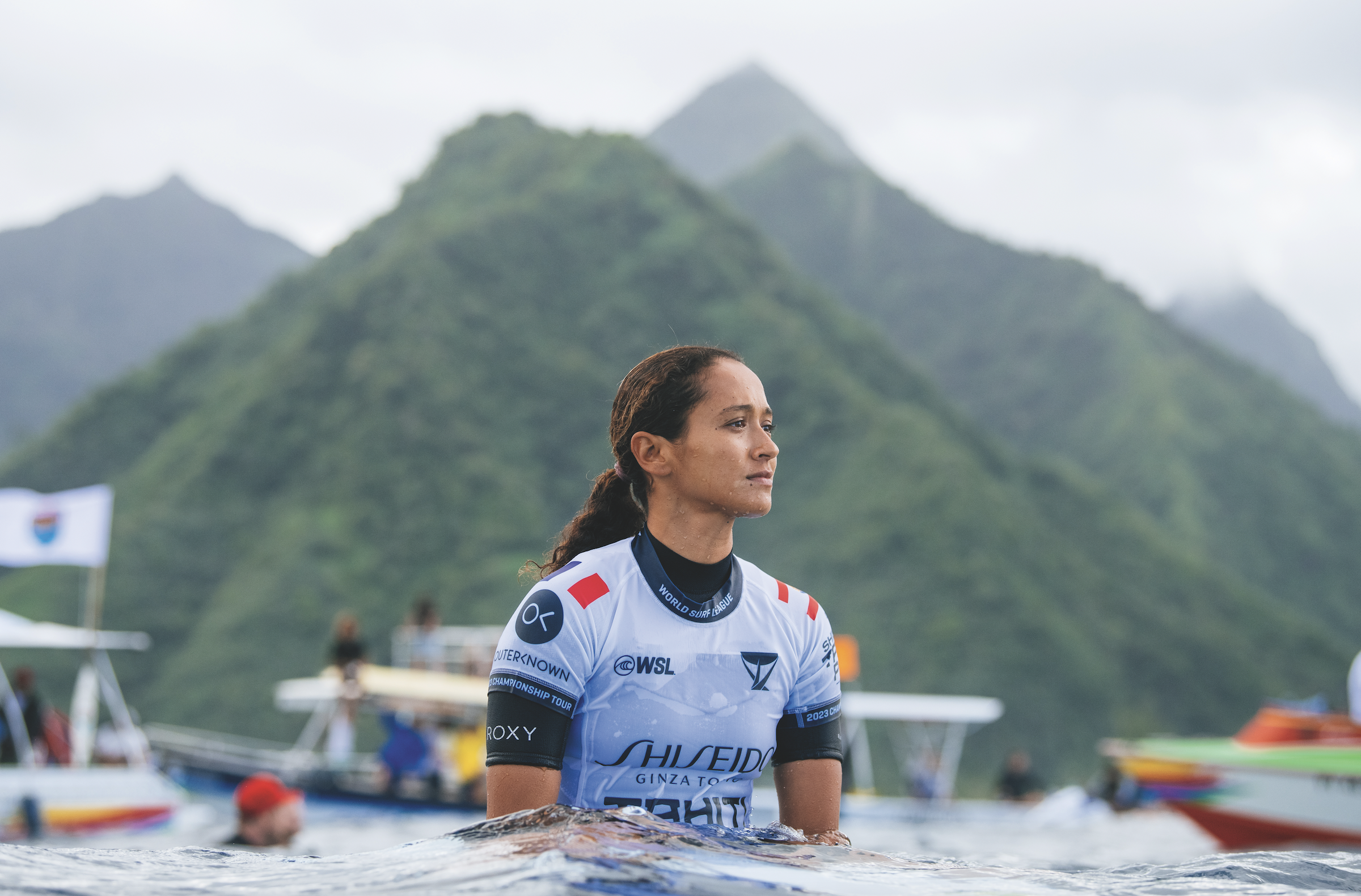
Pro surfers are typically hosted by the same local families year after year. (During the Olympics, athletes will be housed on a ship anchored in a sandy area offshore to avoid damaging the seabed.) Hobgood tells me he made visits to his “adopted Tahitian family” for nearly two decades. For the past five years, he has come to Teahupo’o to help coach reigning Olympic champ, Hawaiian Carissa Moore and now stays with her adopted family. “They take us on hikes you’d otherwise never know how to access and have rich stories about the place,” he says. “And everything they prepare for us at meals, from the passion-fruit jam to the chilli sauce, is homemade.”
The next big thing being “adopted” by a Tahitian family is hiring Raimana van Bastolaer as your guide. For a first-time visitor, Tahiti Iti can be far harder to access than other islands, which is perhaps why so few people explore the peninsula. You need a local to reveal where to go, and van Bastolaer makes you feel like an insider.
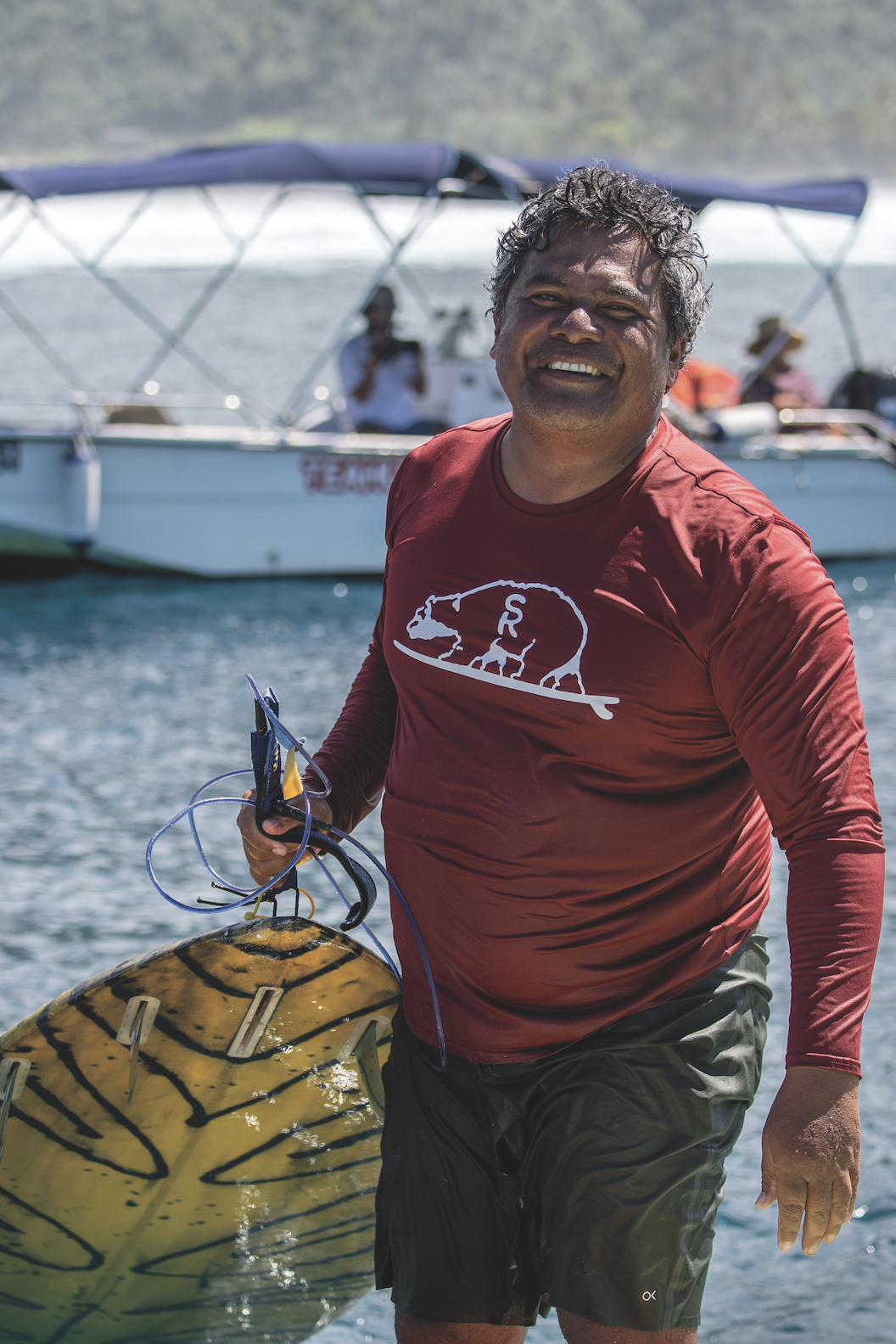
Born and raised in the capital of Papeete, he was one of the first locals to surf Chopes, and over the years, his intricate knowledge of the wave has earned him the nickname the Godfather of Teahupo’o. He was out in the channel with Hamilton the day the American had his historic ride, and John John Florence and Kelly Slater are among the surfers who stay with him when they’re in town. Van Bastolaer even did a stint as a part-time coach at Surf Ranch, Slater’s central California wave park. Thanks to his non-stop pursuit of a good time, everyone wants to be around him. Now 48, the stockily built, dauntingly athletic van Bastolaer has become the go-to guide for visitors ranging from Julia Roberts, Margot Robbie and Jason Momoa to Mark Zuckerberg and Prince Harry. “I get to yell at princes and CEOs,” he jokes. “I’m out in the water with them telling them when to pop up and paddle. And they love it.”
Tahiti’s unofficial ambassador lives and breathes surfing. Through his company, Raimana World, he takes just one or two guests at a time on private curated surf tours throughout French Polynesia’s two central archipelagoes: the Society Islands (which are home to Tahiti) and the Tuamotus; he plans to add Fiji soon. Some of his clients base themselves on their own yachts or charter one through Pelorus. The yacht specialist’s Tahiti portfolio includes the 77-metre La Datcha, which has two helipads, a submersible and a spa.
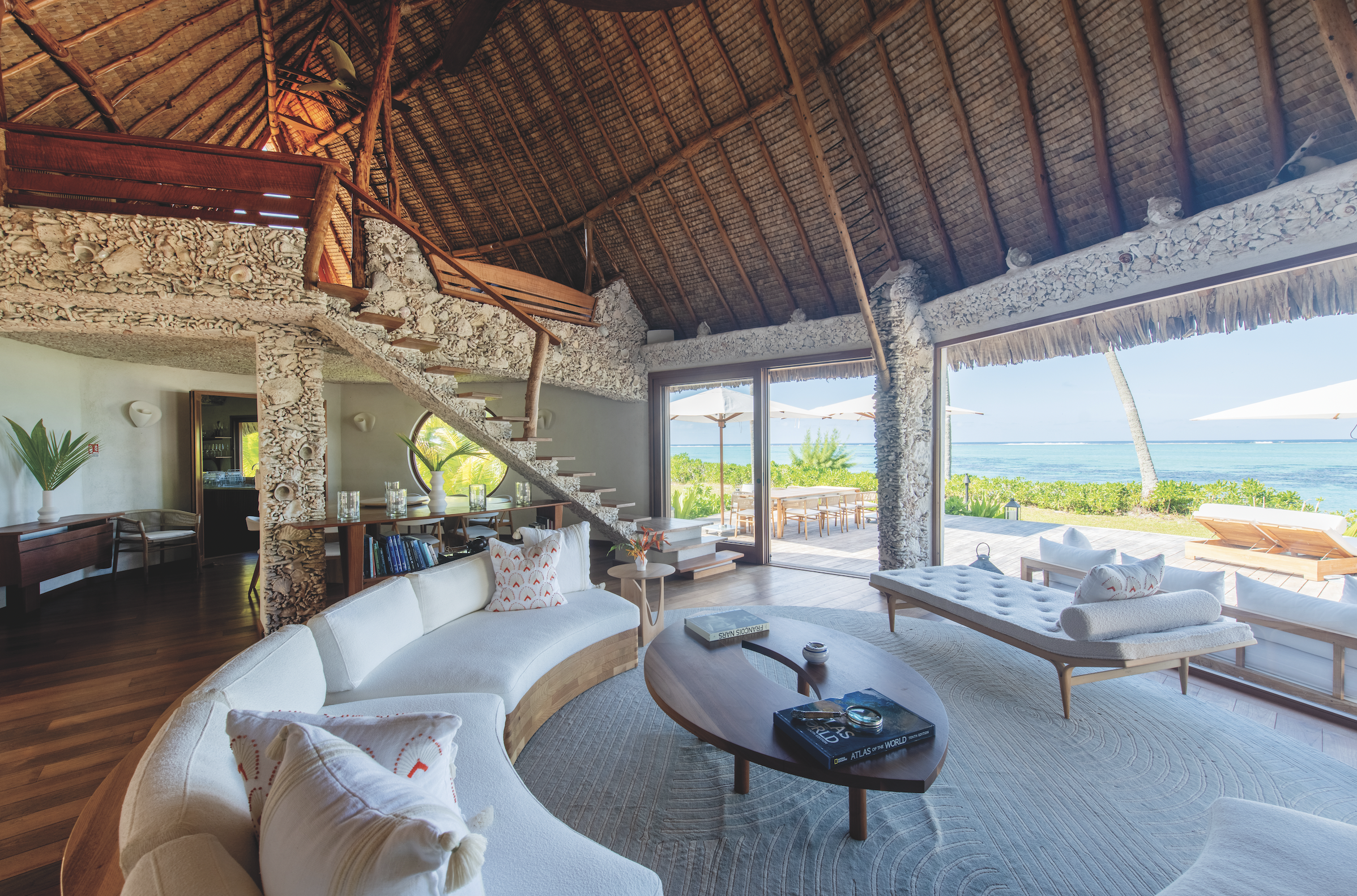
Other clients he directs to exclusive properties, such as Motu Nao Nao, a new 25-hectare private-island resort in the cerulean lagoon of Raiatea with just three enormous villas crafted from coral, wood, and shells. A roving bar bike delivers custom cocktails to guests as they explore the island, and the French chef, inspired by Asian and North African cuisine, prides himself on never repeating a dish, no matter how long guests stay.
Van Bastolaer gets only one or two clients a year experienced enough to be coached into a barrel at Teahupo’o. “Most just want to get close to the wave to feel its energy and hear it roar,” he says. “That’s enough to give you an adrenaline rush.” Locals are incredibly protective of their surf spots, and van Bastolaer stays away from popular breaks. “Out of respect, I don’t take clients out if there are more than a few people in the water. Luckily, I have access to toys that get us away from the crowds.” He island-hops by helicopter, yacht or jet boat, then transports guests to surf breaks via high-speed RIB (rigid inflatable boat) or jetski. Most days average two to three hours of surfing, and he sprinkles in other activities such as snorkeling, whale watching (July to November) and barbecues at his house.
Papara, the beautiful black-sand beach where van Bastolaer honed his skills, 45 minutes from Teahupo’o, will be turned into a fan viewing zone with jumbo screens during the Olympics. Papara is one of the most forgiving surf breaks in Tahiti, and I head here to longboard. La Plage de Maui, a simple restaurant with sandy floors, plastic chairs and lagoon vistas, becomes my daily après-surf spot. Located in West Taiarapu, 40 minutes east of Papara, with nothing but coastal road and local homes in between, this humble spot sits next to Maui Beach, one of the only white-sand beaches on the whole island. This stretch may be Tahiti Iti’s best-kept secret.
After a barefoot walk along the shore, I don’t bother to put my shoes back on before heading into the restaurant, where servers proudly sport Tahiti Pro T-shirts and posters of pros hang on the walls. At a waterfront table, I spot rainbow-hued parrotfish and Moorish idol in the glassy lagoon. I’m pretty sure I could live on a diet of local Hinano beer and poisson cru, Tahiti’s national dish of raw fish marinated in lime juice and coconut milk. My final day, I ask my waitress if she’s concerned the Olympics might overexpose this laid-back, oft-forgotten enclave. She just laughs in reply.
On the drive back to my villa, I remember what van Bastolaer told me when we were introduced a year ago: Tahiti Iti’s specialness is lost on those seeking overwater bungalows or nightlife. It’s a place you can’t know in a day. The island reveals itself to you slowly. And even when van Bastolaer is your host, he won’t give away all its secrets.
Subscribe to the Newsletter
Recommended for you
In Search of the Promised Land
In a world driven by self-optimisation tech, what is left for a luxury health retreat to offer? We head to Thailand’s RXV Wellness Village, seeking some magic among the data.
October 23, 2025
This New Safari in Namibia Takes You on Dune Drives Like an IRL Mad Max
Ker & Downey Africa’s fully customisable itinerary lets you channel your inner Max or Furiosa with a slew of activities inspired by the film franchise.
September 11, 2025
You may also like.
You may also like.
Radek Sali’s Wellspring of Youth
The wellness entrepreneur on why longevity isn’t a luxury—yet—and how the science of living well became Australia’s next great export.
Australian wellness pioneer Radek Sali is bringing his bold vision for longevity and human performance to the Gold Coast this weekend with Wanderlust Wellspring—a two-day summit running 25-26 October 2025 at the RACV Royal Pines Resort in Benowa. Sali, former CEO of Swisse and now co-founder of the event and investment firm Light Warrior, has long been at the intersection of wellness, business and conscious purpose.
Wellspring promises a packed agenda of global thought leaders in biohacking and longevity, including Sydney-born Harvard researcher David Sinclair, resilience pioneer Wim Hof, performance innovator Dave Asprey and muscle-health expert Gabrielle Lyon. From immersive workshops to diagnostics, tech showcases, and movement classes, Sali aims to make longevity less a niche pursuit for the elite and more an accessible cultural shift for all. Robb Report ANZ recently interviewed him for our Longevity feature. Here is an edited version of the conversation.
You’ve helped bring Wellspring to life at a moment when longevity seems to be dominating the cultural conversation. What drew you personally to this space?
I’ve always been passionate about wellness, and the language and refinement around how we achieve it are improving every day. Twenty years ago, when I was CEO of Swisse, a conference like this wouldn’t have had traction. Today, people’s interest in health and their thirst for knowledge continue to expand. What excites me is that wellness has moved into the realm of entertainment—people want to feel better, and that’s something I’ve always been happy to deliver.
There are wellness retreats, biohacking clinics, medical conferences everywhere. What makes Wellspring different?
Accessibility. A wellness retreat can be exclusive, but Wellspring democratises the experience. Tickets start at just $79, with options up to $1,800 for a platinum weekend pass. That means anyone can learn from the latest thought leaders. Too often in this space, barriers are put up that limit who can benefit from the science of biohacking. We want Wellspring to be for everyone.
You’re not just an organiser, but also an investor and participant in this field. How do you reconcile passion with commercial opportunity?
Any investment I make has to have purpose. Helping people optimise their health has driven me for two decades. It’s satisfying not just as an investor but as an operator—it builds wonderful culture within organisations and makes a real difference to people’s lives. That’s the natural fit for me, and something I want to keep refining.
What signals do you look for in longevity ventures to separate lasting impact from passing fads?
A lot of what we’re seeing now are actually old ideas resurfacing, supported by deeper scientific research. My father was one of the first in conventional medicine to talk about diet causing disease and meditation supporting mental health back in the 1970s. He was dismissed at first, but decades later, his work was validated. That experience taught me to look for evidence-based practices that endure. Today, we’re at a point where great scientists and doctors can headline events like Wellspring—that’s a huge cultural shift.
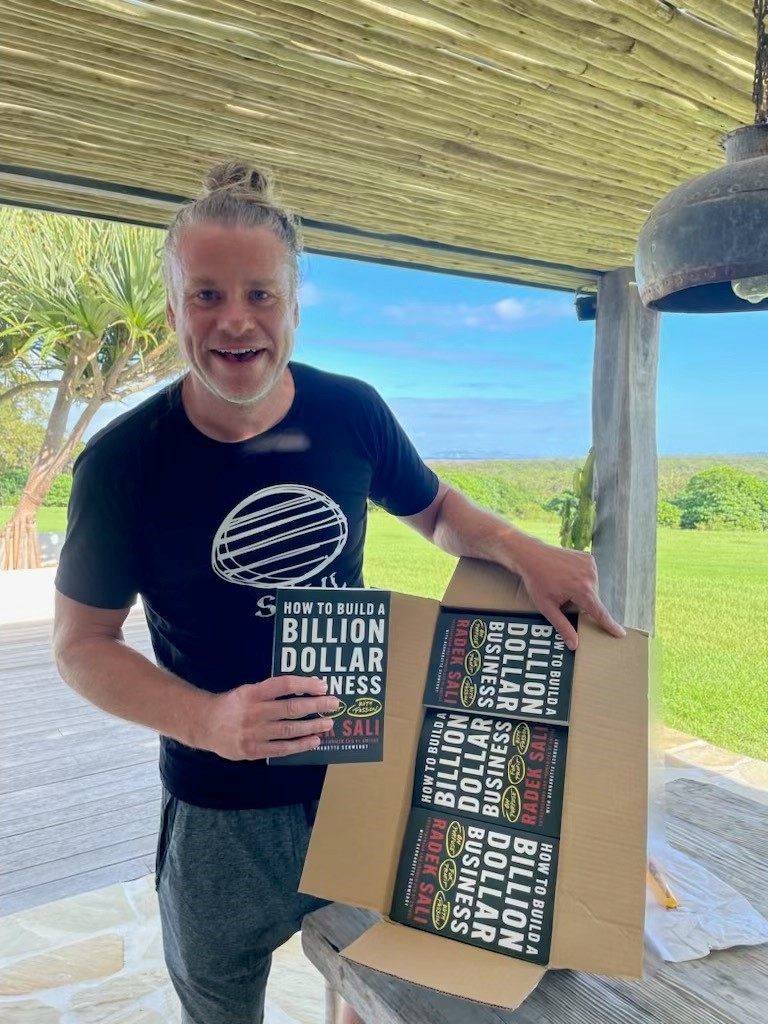
Longevity now carries a certain cultural cachet—its own insider language and status markers. How important is that to moving the field forward?
Health is our most precious asset, and people have always boasted about their routines—whether it’s going to the gym, doing a detox, or training for a marathon. What’s different now is that longevity practices are gaining mainstream recognition. I see it as something to be proud of, and I want to democratise access so everyone can ride the biohacking wave.
But some argue that for the ultra-wealthy, peak health has become a kind of luxury asset—like a private jet or a competitive edge.
That’s short-sighted. Yes, there are extremes, but most biohacking methods are accessible and inexpensive. Look at the blue zones—their lifestyle practices aren’t costly, yet they lead to long, healthy lives. That’s essential knowledge we should be sharing widely, and Wellspring is designed to do that in an engaging way.
Community is often cited as a key factor in healthspan. How does Wellspring foster that?
Community is at the heart of it. Just as Okinawa thrives on social connection, we want Wellspring to be a regular gathering place where people uplift each other. Ideally, it would become as busy as a Live Nation schedule—but for health and wellness.
Do you worry longevity could deepen class divides?
Class divides exist, and health isn’t immune. But in Australia, we’re fortunate—democracy and a strong equalisation process help maintain quality of life for most. Proactive healthcare, like supplementation and lifestyle changes, isn’t expensive. In fact, it’s cheaper than a daily coffee. That’s why we’re one of the top five longest-living nations. The opportunity is to keep improving by making proactive health accessible to everyone.
Some longevity ventures are described as “hedge-fund moonshots.” Others, like Wellspring, seem grounded in time-tested approaches. Where do you stand?
There’s value in both, but I’m more interested in sensible, sustainable practices. Things like exercise, meditation, and community-driven activities are proven to extend life and improve wellbeing. Technology can support this, but we can’t lose sight of the human elements—connection, balance, and purpose.
Finally, what role can Australia—and Wellspring—play in shaping the global longevity conversation?
The fact that we can put on an event like Wellspring, attract world-leading talent, and already have commitments for future years says a lot. Australia is far away, but that hasn’t stopped great scientists and thinkers from coming. We’ll be here every year, contributing to the global conversation and, hopefully, helping more people extend their healthspan.
You may also like.
‘Continuum’ Opens to Rave Applause at Sydney Dance Company
Rafael Bonachela’s latest curatorial triumph premiered last night at the Roslyn Packer Theatre, dazzling audiences with its emotional range and fearless physicality.
Sydney Dance Company opened its latest season with Continuum, a triple bill that reminds audiences why the ensemble remains Australia’s most compelling cultural export. Receiving a standing ovation at its premiere last night at the Roslyn Packer Theatre, the program unfolds as an elegant meditation on movement and metamorphosis—three distinct choreographic visions held together by Rafael Bonachela’s curatorial precision and instinct for contrast.
Stephen Page’s Unungkati Yantatja – one with the other breathes land, sea, and sky into motion; Tra Mi Dinh’s Somewhere between ten and fourteen lingers in the tender light between day and night; and Bonachela’s own world-premiere Spell delivers the evening’s visceral heartbeat. Together they trace the continuum of life itself—fluid, volatile, and impossible to pin down. Running through 1 November, the production affirms Bonachela’s vision of dance as “an ever-evolving conversation between artists, audiences, and the world around them.” Robb Report ANZ recently caught up with Bonachela.
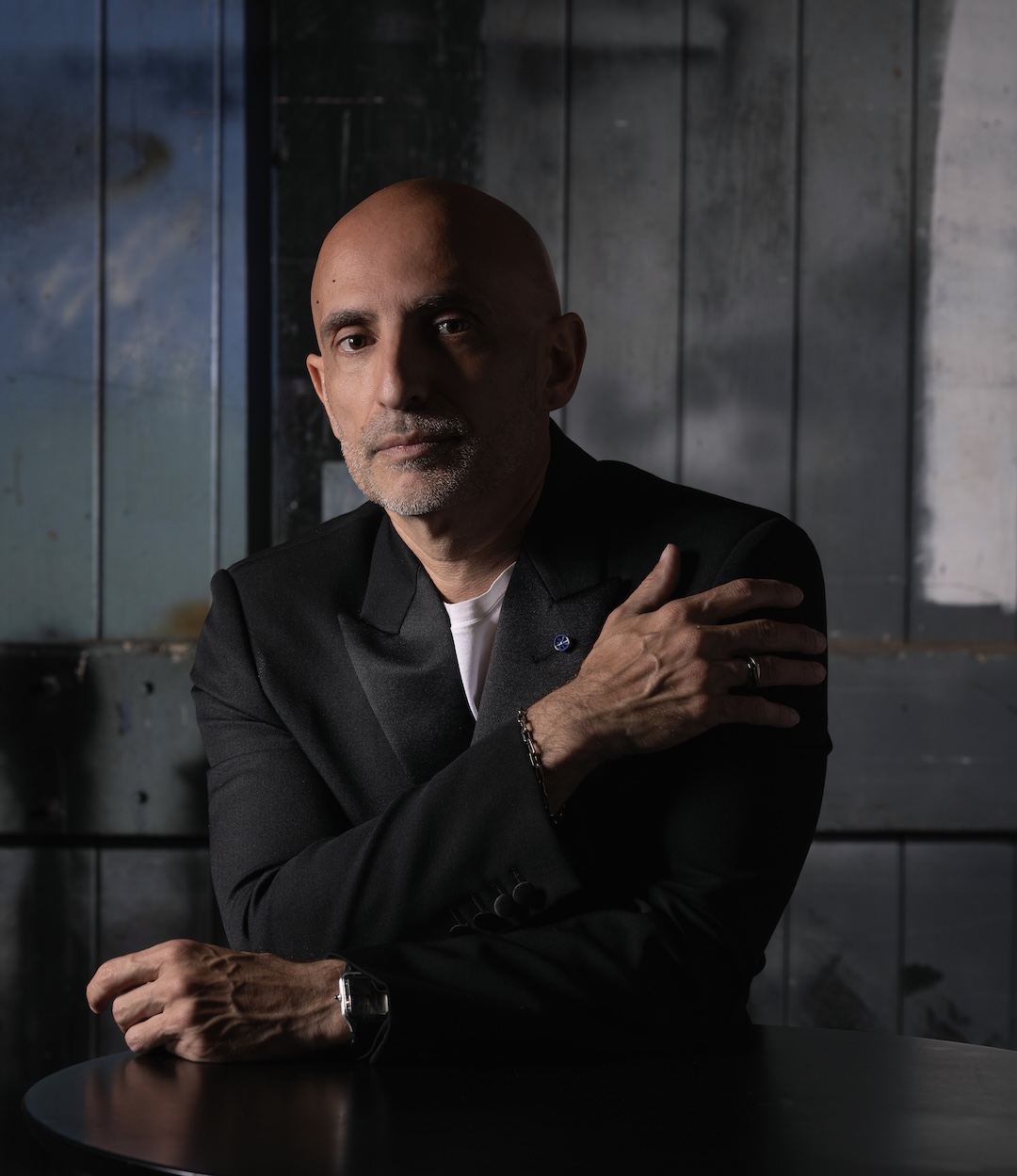
Continuum is described as “a bold exploration of the ever-shifting cadence that binds us to the world.” How did this idea of constant transformation influence your choreographic choices in Continuum?
I’ve curated this evening as an invitation for audiences to experience dance as an ever-evolving conversation—between past and present, between the individual and the collective, and between diverse artistic voices. My intention with this program is to spark connection, curiosity, and reflection, offering works that challenge, move, and inspire while revealing the transformative power of the body in motion.
Each choreographer brings a distinct perspective, yet all share a commitment to exploring the body in motion as a vessel for transformation. Through contrasting aesthetics, cultural resonances, and shifts in time, these works reveal how dance exists on a continuum—where moments build upon one another, find new meanings in fresh contexts, and affirm the enduring power of the human form to express what words cannot.
You’ve created the world premiere Spell within Continuum, which explores “the limits of emotional and physical expression.” What did you aim to conjure emotionally and physically through Spell, and how does it dialogue with the other works in the triple bill?
The title Spell itself suggests a duality—it can be something magical, but also something we fall under without even realising. Emotionally, I want to evoke an atmosphere that is at once intimate and volatile, where vulnerability and power exist side by side. There’s a ritualistic quality to the work, as if the dancers are caught inside a force they cannot quite escape—and it’s that tension which drives the movement and fuels the piece.
Within Continuum, Spell emerges as an intense, visceral heart—both contrasting with and speaking to the other works. While it shares the evening’s theme of transformation, it explores it through a lens of emotional ignition and fearless physicality.
In crafting Continuum, how did you balance moments of intimacy and expansiveness—especially when layering live elements like music and immersive lighting—to evoke that ebb and flow of life’s narratives?
In Continuum, each choreographer works with complete artistic freedom, without any direction from me. That independence brings out authentic contrasts and unexpected connections between the works. It’s this variety that invites audiences to engage on their own terms, discovering personal meanings and emotional threads that are unique to each viewer.
This triple bill seems to offer a journey through time and place—from twilight’s fleeting beauty to elemental breath. How do you want audiences to experience—and perhaps rethink—the relationship between movement, nature, and storytelling?
I always want audiences to come with an open mind and allow the experience to be unprescribed free to discover their own meanings and narratives. Dance has the unique power to be felt as much as it is seen, to resonate physically and emotionally in ways words can’t. I hope audiences leave with a renewed sense of how deeply movement is connected to the natural world, and how it can tell stories without language. Like nature, this evening is always in motion—emerging, transforming, and fading—so that each work becomes a landscape the audience can journey through, sensing their own place in the continuum of life
Looking ahead, does Continuum carve out a new direction or personal milestone for your artistic trajectory? What might this signal for your future choreographic explorations?
Continuum feels like both a culmination and a starting point. It gathers threads from my past work, my fascination with transformation, my love of collaboration, my search for emotional truth and weaves them into something that opens new doors.
Creating and curating this triple bill has changed how I see works interacting—how contrasting voices can strengthen shared themes. It’s inspired me to explore even more fluid boundaries between ideas, styles, and disciplines.
If it signals anything for the future, it’s that I’m interested in going further into that space where dance is not just movement, but an ongoing conversation—between artists, between forms, and between audiences and the world around them.
Continuum runs through November 1 at the Roslyn Packer Theatre.
You may also like.
By India Brown
26/07/2025
Inside the $30 Billion Obsession Among the Ultra-Wealthy : A Race to Live Longer
The pursuit of an extended life has become a new asset class for those who already own the jets, the vineyards, and the art collections. The only precious resource left to conquer, it seems, is time.
If you want to know what the latest obsession is these days among the ultra-wealthy, listen in at dinner.
Once it was crypto, then came AI and psychedelics, now it’s longevity all the time. The talk is of biomarkers, NAD+ levels, and methylation clocks, of senolytics and stem cells. Guests compare blood panels like wine lists, and the most important name to drop is no longer your banker or contact at Rolex but your longevity physician. For those just arriving at the conversation, the new science can sound like science fiction—but it’s fast becoming the lingua franca of money.
The field has its own vocabulary—epigenetic reprogramming, which aims to reset cellular clocks; cellular senescence clearance, the removal of “zombie” cells that clog our systems as we age; precision gene therapies, designed to personalise interventions at the level of DNA—that sounds equal parts Brave New World and Wall Street pitch deck. But make no mistake: this is no longer a niche pursuit. The sector is already worth an estimated $30 billion globally and projected to surpass $120 billion within the decade, having attracted billions in investment from the likes of Altos Labs, Juvenescence and Google-backed Calico. Tech titans and old-money families alike are staking claims on the possibility of an extra decade or two. It’s a space where venture funds court Nobel laureates, hedge funds bankroll gene-therapy moonshots, and even wellness festivals in Australia draw rock-star scientists to the stage.
The Poster Child and the Pitch
David Sinclair, the Sydney-born Harvard geneticist who has become something of a poster child for the field, is quick to underline the stakes. “We’re not just talking about lifespan, we’re talking about health span,” he tells Robb Report. “Extending the number of years people live well—without frailty, without disease—isn’t just a medical breakthrough. It’s a social and economic one.” Sinclair, whose research ranges from NAD boosters to epigenetic age-reversal therapies, has calculated that adding a single year of healthy life to the US population, for example, could be worth $38 trillion in economic benefit—fewer years of costly aged care, less burden on hospitals, more years of productivity and compounding returns. In other words, the dividends of health are financial as well as personal. “That’s why governments and investors are paying attention,” he says.
Sinclair has become a fixture on the global circuit, drawing crowds that rival TED or Davos. As Radek Sali, the Australian entrepreneur behind the new Wanderlust Wellspring longevity festival taking place on the Gold Coast this October, where Sinclair is the keynote speaker, puts it: “Wellness has moved into the realm of entertainment.” At Wellspring, platinum-tier guests pay up to nearly $2,000 for the privilege of hearing scientists and investors share the stage over a weekend like headliners at Coachella.
Investing in Time
And then there are the sideshows. Bryan Johnson, the tech mogul turned human guinea pig, makes headlines with his open-source, organ-by-organ data tracking—his infamous “penis readings” have become cocktail-party fodder. While many dismiss him as a parody of the field, his multimillion-dollar project Blueprint has nevertheless made longevity impossible to ignore in the mainstream.
For the uninitiated, the science of longevity today is no longer about vitamin salesmen or fringe dietary regimes. This is the new frontier—one where biology is not just observed but engineered, and where investors smell opportunity on par with space travel. It’s little wonder that Altos Labs has raised billions to chase cellular rejuvenation, or that Juvenescence has secured more than $400 million to fast-track therapies. What was once the realm of eccentric tinkerers now attracts sovereign wealth funds.
“This body takes me to meetings, earns me money—why not invest time and money into it?”
The appeal to the One Percent is obvious. Longevity is a natural extension of portfolio thinking: diversify your assets, hedge your risks, and above all, maximise return on investment. Except in this case, the returns are measured in years of health, energy and cognition. As Andrew Banks, a Sydney-based entrepreneur and early investor in Juvenescence, explains: “This body takes me to meetings, earns me money—why not invest time and money into it?” His Point Piper home teems with contraptions—a Reoxy breathing machine, hydrogen therapy, red-light sauna, and he spends a few hours a day on maintenance, as if his body were a private equity stake.
Banks, like others in his cohort, is baffled that more wealthy men haven’t followed suit. “Entrepreneurs pride themselves on divergent thinking,” he says. “They expand, dream and create businesses with it. But when it comes to their bodies, they’re convergent—unimaginative. The lack of curiosity is astonishing to me.”
Medicine 3.0 and the New Rituals
Steve Grace, a Sydney-based entrepreneur and the proprietor of exclusive private networking club The Pillars, which is opening a longevity program, thinks there is a reckoning coming for those who do not take matters into their own hands. “As someone who has run a few recruitment businesses,” he says, “I can tell you that if you’re a man or woman in your 50s and working as an employee, even in a really good position, it’s time to get worried about job security and being aged out of the workforce. You have to make yourself as vital as possible and become the best version of yourself, or you’re toast.”

What was once fringe has now become a cultural necessity for those who can afford anything, with science finally catching up to ambition. Sinclair’s lab at Harvard recently published a study on the reversibility of cellular ageing—restoring vision in blind mice and setting the stage for human trials in conditions like glaucoma. In Boston, his company Life Biosciences will begin treating patients with blindness in a Phase I trial using partial cellular reprogramming early next year. “This isn’t science fiction anymore,” Sinclair says. “We’re at the point where we can reprogram cells, turn back their biological clocks, and restore function.”
Meanwhile, practitioners like Dr. Adam Brown of the Longevity Institute in the Sydney suburb of Double Bay are reinventing diagnostics. His “assessment menu” has been compared—only half-jokingly—to a Michelin Guide for medical testing: full-body MRI scans, continuous glucose monitors, polygenic risk scores. “What we do is proactive, not reactive,” he says. “Correct deficiencies first, then optimise health. That’s how you get peak performance in the short term and resilience in the long term.” Brown frames longevity in terms that would resonate with any investor: “There’s a short-term ROI—fixing glucose or sleep issues so you perform better tomorrow. And there’s a long-term ROI—functioning in your 70s as you would in your 40s. That’s extending your career, your income potential and your independence.”
“Once upon a time, male vanity meant injectables, veneers and a tan. Today, it’s VO2 max scores and continuous glucose monitor readouts.”
Peter Attia, the Canadian-American physician and podcast host who has helped popularise the concept of “Medicine 3.0”, echoes this emphasis. Medicine 1.0, according to him, was about surviving infections. Medicine 2.0 was about treating chronic disease. Medicine 3.0 is about staying ahead of decline: measuring, monitoring and intervening early. “The goal is not just to avoid disease but to lengthen health span,” Attia has said.
For those already converted, longevity is less about lab science than daily rituals. Sydney-based Chief Brabon, who trains CEOs like athletes, says: “These men are like Formula One cars—you don’t wait until the tyres are bald before swapping them. You keep everything tuned, precise, optimised.”
That tuning now involves more gadgets than ever: hyperbaric oxygen chambers, cryotherapy, sauna/cold-plunge circuits, peptide stacks, nootropics. And yes, a glut of supplements, some with evidence, others little more than wishful thinking. Once upon a time, male vanity meant injectables, veneers and a tan. Today, it’s VO2 max scores and continuous glucose monitor readouts. “Health is the new flex,” as Steve Grace quipped, glancing at his wrist-worn biometric tracker.
The New Flex: Health as the Ultimate Luxury
Still, there is plenty of scepticism. Some therapies are unproven, others prohibitively expensive. And there is the unavoidable fact that many leading scientists, including Sinclair, have stakes in companies producing supplements and therapeutics, raising eyebrows about conflicts of interest. “The difference,” Sinclair insists, “is whether it’s backed by peer-reviewed science and measurable biomarkers. If it can’t be quantified, it’s marketing, not medicine.”
Then there are the contradictions. It promises democratisation while often priced like a private club. It champions science but thrives on hype. It seeks to extend health span but risks deepening class divides. “Only if we let it,” Sinclair says when asked if longevity risks becoming the preserve of the wealthy. “Like antibiotics or aspirin, these advances should become widely available and affordable once they scale.” Sali agrees, but from another angle: “Biohacking doesn’t have to be expensive,” he says. “The blue zones prove that—community, diet, movement, purpose. Those are free. Wellspring is about making that knowledge accessible.”
And yet, for all its shortcomings, the movement is here to stay. Investment continues to pour in. Technology—like senolytic drugs that clear aged cells or AI-driven platforms that predict individual disease risk years in advance—is moving from speculation to clinical trial. Scientists are being recast as influencers. And the wealthy, always in search of the next advantage, have found in longevity a pursuit as old as alchemy, yet dressed in the language of venture capital. The truth is that health has always been an asset. What’s new is that it’s now being traded, optimised and measured like one.
In the end, longevity is less about a moonshot than about curiosity. Banks, Sali, Sinclair, Attia are all, in their own way, betting on time. Perhaps the most radical idea is also the simplest: that the best-performing asset in any portfolio is the body itself. Unlike Bitcoin, it carries you to meetings. Unlike art, it cannot be stored in a vault. Unlike real estate, it is non-transferable.
The new calculus of longevity is the recognition that the ultimate luxury is not wealth or status, but a few more decades of clear thought, strong bones and good company—and the ability to make money off it. Everything else, as one investor put it, is just a rounding error.
You may also like.
How Sailing Shaped Loro Piana’s Most Iconic Designs
Pier Luigi Loro Piana grew his family textile business into a celebrated fashion house by following his passion for sports on land and at sea.
The Regatta Connection
The race village at Port de Saint-Tropez is awash with people in nautical navy and white, the de facto dress code for the Loro Piana Giraglia regatta. This is the second year the fashion house has lent its name to one of the Mediterranean’s most prestigious summer races. The course zooms from the French coast to Genoa, Italy, taking a sharp turn past Giraglia, a small island off Corsica’s northern tip. It’s the latest in a long line of marine events the brand has sponsored, dating back more than 20 years.
The link between sailing and the brand—and more consequentially the Loro Piana family—is exemplified by the man Robb Report is here to meet: Pier Luigi Loro Piana. An avuncular figure in his 70s with the physique of a man who has enjoyed life, Pier Luigi fell in love with sailing in his late teens, when a family friend took him for a cruise in a sloop.
“Using the wind to go faster or slower, driving the boat like it has an engine, it’s really fascinating,” he says. Inevitably, he started competing. “When you’re sailing, you’re always looking for other boats to go and fight with. It’s an instinct,” he says. And then, with considerable understatement, “I think it’s a nice hobby.”
A Life Under Sail
He currently owns two boats: My Song, which you can see on these pages, is a 25 m sailing yacht that competed in the Regatta. There’s also Masquenada, a comfortable 50 m explorer. It’s a commendable set-up befitting a man who shaped one of Europe’s most celebrated fashion houses.
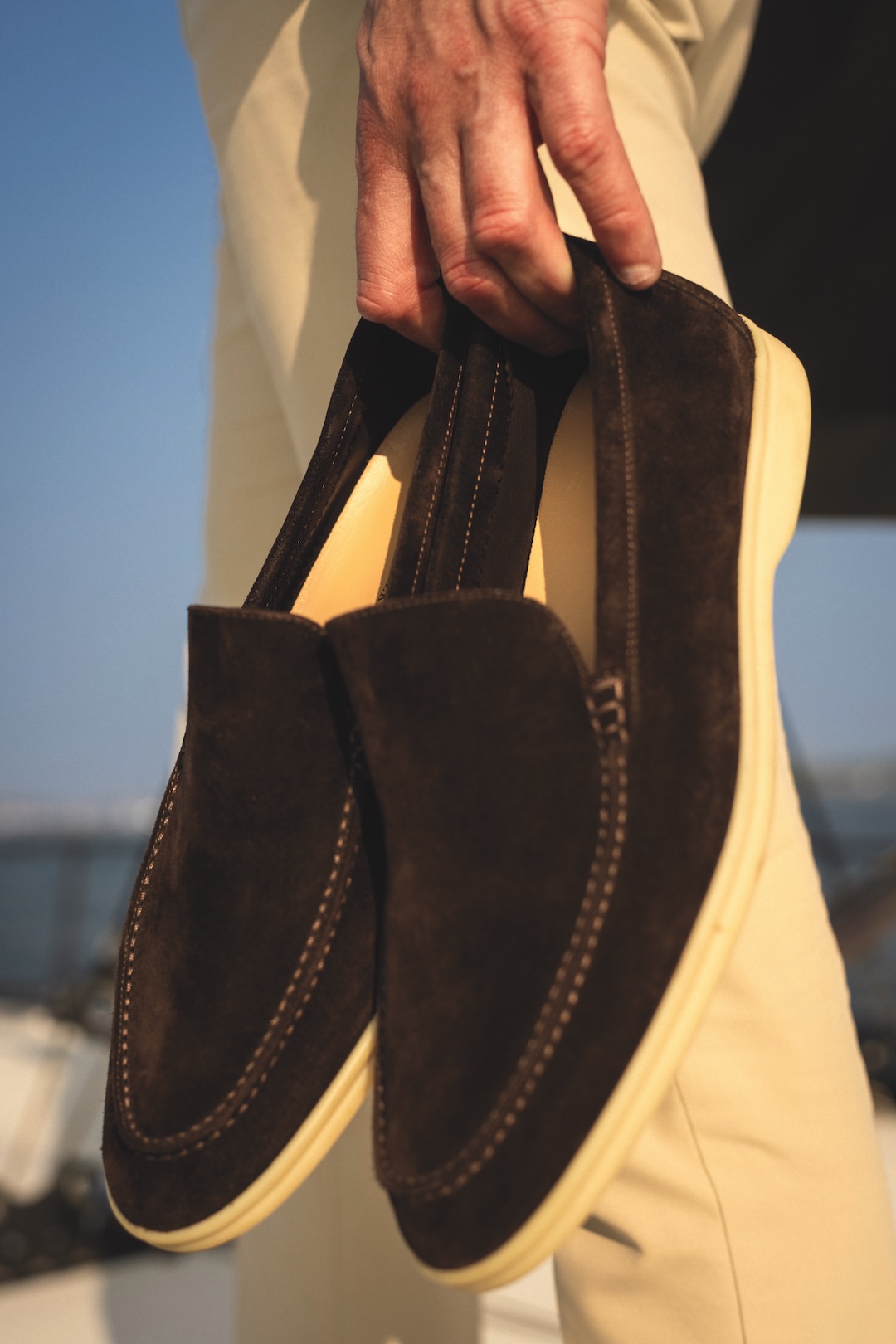
A Family Business Turned Global Powerhouse
The textile and clothing company that bears his family’s name was launched by an ancestor, Pietro Loro Piana, in 1924. A few generations later, Pier Luigi and his brother, Sergio, would run it for four decades until LVMH acquired a majority stake for around $4 billion in 2013. Sergio passed away that year; his widow and Pier Luigi still own a share of the brand between them.
The brothers proved innovative custodians, moving the company upmarket with an insistence on ultra-fine materials and groundbreaking fabrications. And the connection with sports—specifically yachting, horseback riding, skiing and golf—is integral to how the brand positions itself. As Pier Luigi recalls, such associations often had self-serving origins.
“These are the sports my brother and myself were doing,” he says. “We were very committed in business in the 1970s, ’80s, ’90s, so we were like our customers: people that like to work hard but also play hard. And that meant sports.”
Innovation Born of Necessity
This affinity often led them to develop durable, yet elegant, materials and gear for their off-duty pursuits, eventually offering versions to their athletic clientele. “We engineered products with unusual properties, natural fibres like wool or cashmere with a membrane that makes it waterproof and windproof… For research and development, I was the first victim,” he says with a chuckle. Once, he wanted a ski jacket that was “warmer, lighter, softer and better” than nylon models, so he made a prototype to test on the slopes. It gave birth to the Loro Piana Storm System, launched in 1994. The line’s wind-resistant waterproof wool and cashmere has since been used by brands around the world. “I still have this jacket,” he says.
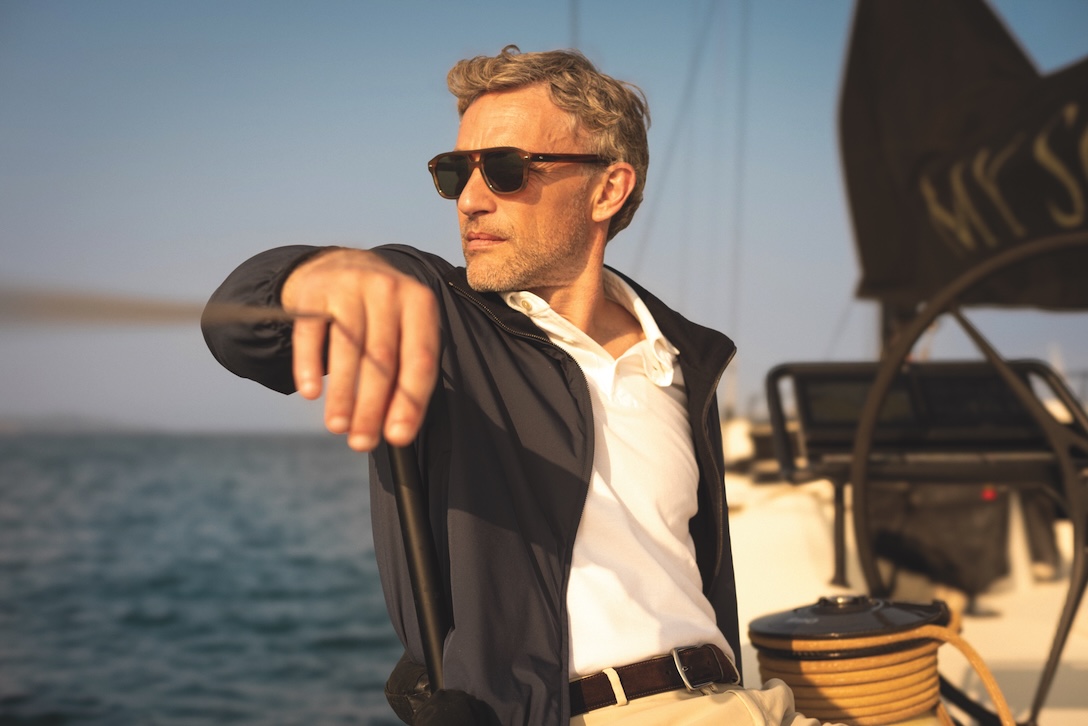
The same process happened on the water. A beloved reversible bomber, with knitted cashmere on one side and waterproof polyester on the other, was born from Pier Luigi’s need for a functional jacket to wear on his yacht. “It’s very light, doesn’t wrinkle, it’s warm, windproof,” he says. “It solves so many problems.”
He takes less credit for perhaps the brand’s most famous—and almost certainly most imitated—product, the white-soled suede Summer Walk loafers. “That was my brother,” he says. “When we were 20, 30 years old, we went sailing and there were only [Sperry] Top-Siders or Sebagos. But when the soles got worn, they got hard and slippery.”
The answer: a non-marking sole with grip—“like a tire you use in Formula 1 when it’s wet”—which Sergio got his bespoke shoemaker to sew to suede uppers. Eventually, they produced two versions: a loafer and the Open Walk, a model with a slightly higher top. “We discovered people were using them also for formal wear because they were so comfortable,” says Pier Luigi. “It’s really a successful story that started from product research.”
And if problem-solving can turn your family business into a giant of global style, clearly it pays to be a little selfish.
You may also like.
The Supercar of Pool Tables
In a rare fusion of Italian design pedigree and artisanal craftsmanship, Pininfarina and Brandt have reframed the barroom game as aerodynamic high art.
In the rarefied realm where leisure meets design, the latest object of desire doesn’t purr down the autostrada—it commands the room from a single sculptural base. The Vici pool table, a collaboration between Italian automotive legend Pininfarina and Miami’s bespoke table-maker Brandt Design Studio, reimagines the game with the same aerodynamic poise and artisanal precision that have graced some of the world’s most beautiful vehicles.
Named for Julius Caesar’s immortal boast—“Veni, vidi, vici”—this limited-edition series transforms billiards from casual diversion into a declaration of style. Every curve is deliberate, from the ultra-thin playing surface clad in tournament-grade Simonis cloth to the seamless integration of Italian nubuck leather and precision-milled metals. The effect is more haute sculpture than barroom pastime—yet it meets exacting professional standards.
For the true connoisseur, the debut PF 95 Anniversario edition celebrates Pininfarina’s 95-year legacy in just 95 numbered pieces. Finished in dark-blue lacquer with rose-gold accents and a flash of red felt, each table is discreetly nameplated—a tangible claim to an heirloom in the making.
“It’s not just about how it plays—it’s about how it lives in a space,” says Dan Brandt, the master craftsman whose work has long graced the world’s most exclusive interiors. Whether anchoring a penthouse salon, a members’ lounge or the main deck of a superyacht, the Vici is designed to stir conversation before the first break.
For those accustomed to Pininfarina’s sleek automotive silhouettes, this is a chance to bring that same lineage of movement, form and Italian refinement into the home. Only now, the horsepower is measured not in engines—but in the geometry of a perfect shot.
From pool to midcentury to Ottoman, we’ve got all the table angles covered at Robb Report Australia & New Zealand —plus more home-worthy pieces.






